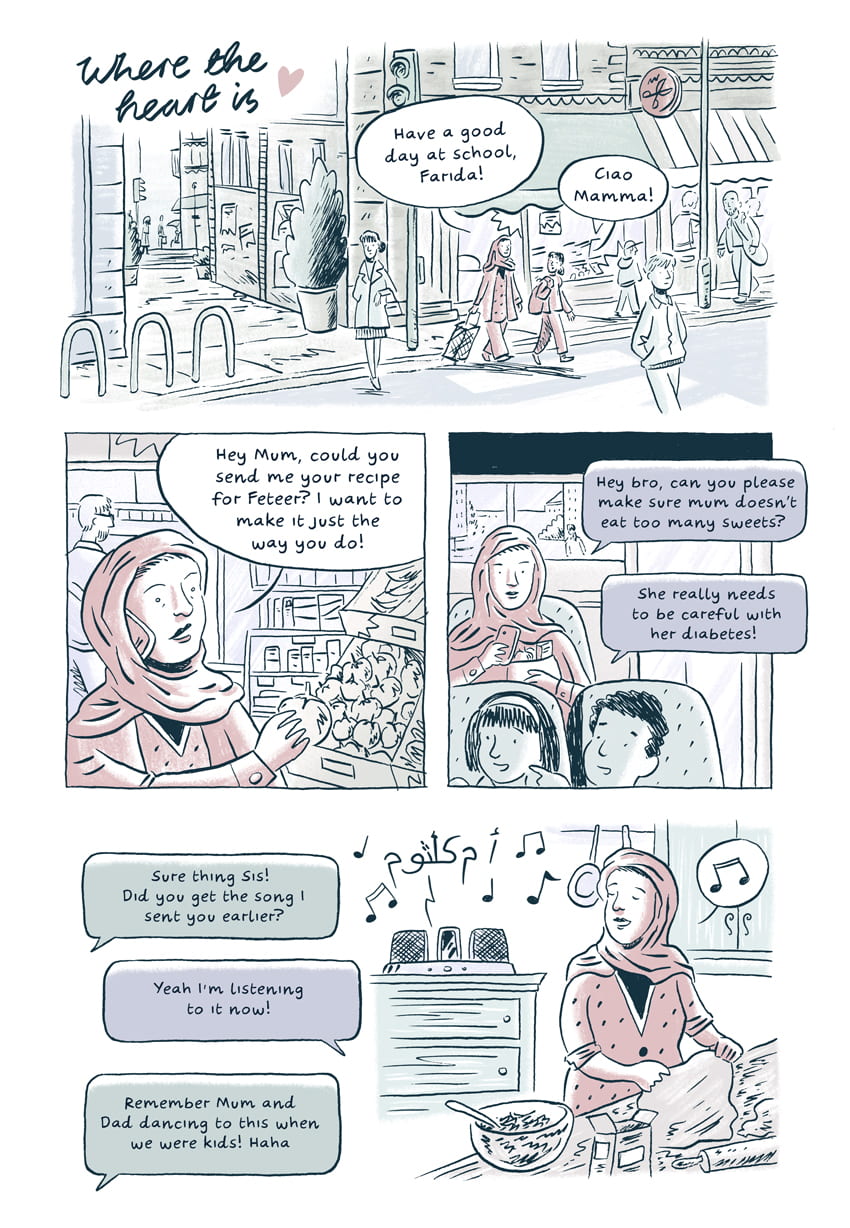Illustrating ASSA’s findings with comics
By Georgiana Murariu, on 26 May 2021
By Georgiana Murariu and Laura Haapio-Kirk
Towards the end of last year, when the collaborative The Global Smartphone book was was nearing completion, we started to think about how to take some of the key findings presented in the books and turn them into ‘discoveries’ on the project website. Presenting key findings in such a way required that we nuance the broad findings with stories from our fieldsites. While, of course, it is possible to do so in text, we wanted to continue the ASSA project’s commitment to pushing traditional tropes of academic dissemination by embracing visual storytelling. At the moment there is lots of exciting work being done in graphic anthropology, as demonstrated by the vast amount of quality work submitted to the Illustrating Anthropology exhibition that Laura co-curated last year, supported by the Royal Anthropological Institute. We decided that we wanted to experiment with comics as a form of research-driven storytelling. After receiving generous advice from Dr Gemma Sou who contributed to the exhibition, we approached the illustrator John Cei Douglas, whom Gemma had collaborated with for her comic ‘After Maria’.
In the recently published The Global Smartphone, when we talk about findings and theoretical contributions such as The Transportal Home or Beyond Anthropomorphism, we always try to illustrate the finding with evidence and vignettes from the field. But what if we could actually illustrate these concepts through comics? Working with the ASSA team to tease out particular stories and observations from their fieldwork, we set to work scripting a series of comics that depict the local ways that 10 of our key ‘discoveries’ manifest in our 10 fieldsites. Working with John closely on these scripts has been an invaluable learning experience, as we soon discovered that scripts had to be pared down to the essentials, and text kept to a minimum in order to make the format work and make the most of John’s sensitive and evocative drawings.
Transforming the researchers’ analyses, observations, and stories into short comic scripts has prompted really valuable discussions about representation, anonymity, and the nature of creative responses to research. What seems like a vital quote in an ethnographic story in a monograph cannot always be included in a cartoon and can actually be more powerful when illustrated without words. Equally, there may be panels in the comic where one may feel like ‘not much happens’, but which are important to conveying the feel and atmosphere of the fieldsite, or the internal experiences of a character.
We will release one new comic every couple of weeks and will reflect on the process of creating anthropological comics here on the blog. We hope that you’ll join us on this journey!
Below is our first comic, drawing on the research of Shireen Walton, who conducted her fieldwork in Milan, Italy. In this comic, we see how the concept of the transportal home plays out in the life of Heba, a migrant from Egypt. Shireen worked in a diverse inner-city neighbourhood, and met a number of migrants who had a particular relationship to their smartphones. Their devices connected them to their families in their home countries and were their ‘constant companions’.
In this cartoon, the fictional character of Heba is inspired by the people that Shireen worked with. Heba is living a busy life in Milan, raising her two teenage children. She is connected to Egypt, where she was born and grew up, through her smartphone, and through various interactions she has with her family throughout the day. As much as her physical environment that surrounds her in Milan, the smartphone is a place in which she ‘lives’ while carrying out her daily activities such as listening to Egyptian music and communicating with her family throughout her day. ‘Home’ is located simultaneously in the physical and digital domains, which are interwoven and integrated. You can read more about the concept of ‘the transportal home’ on the project website here.
We hope you enjoy the comics and would love to hear your thoughts!


 Close
Close




